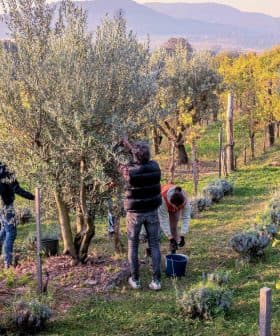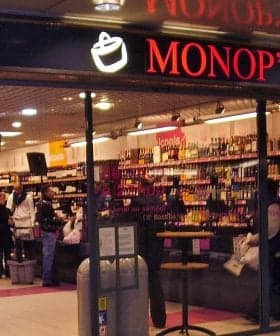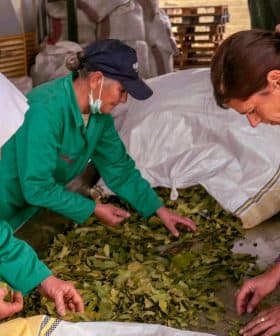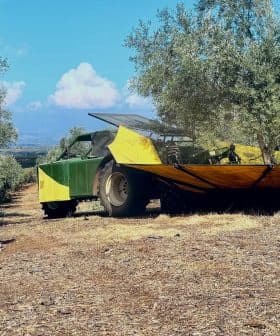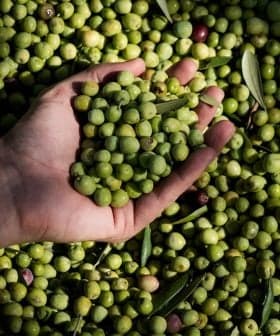Gironde’s First Commercial Mill Opens for Business
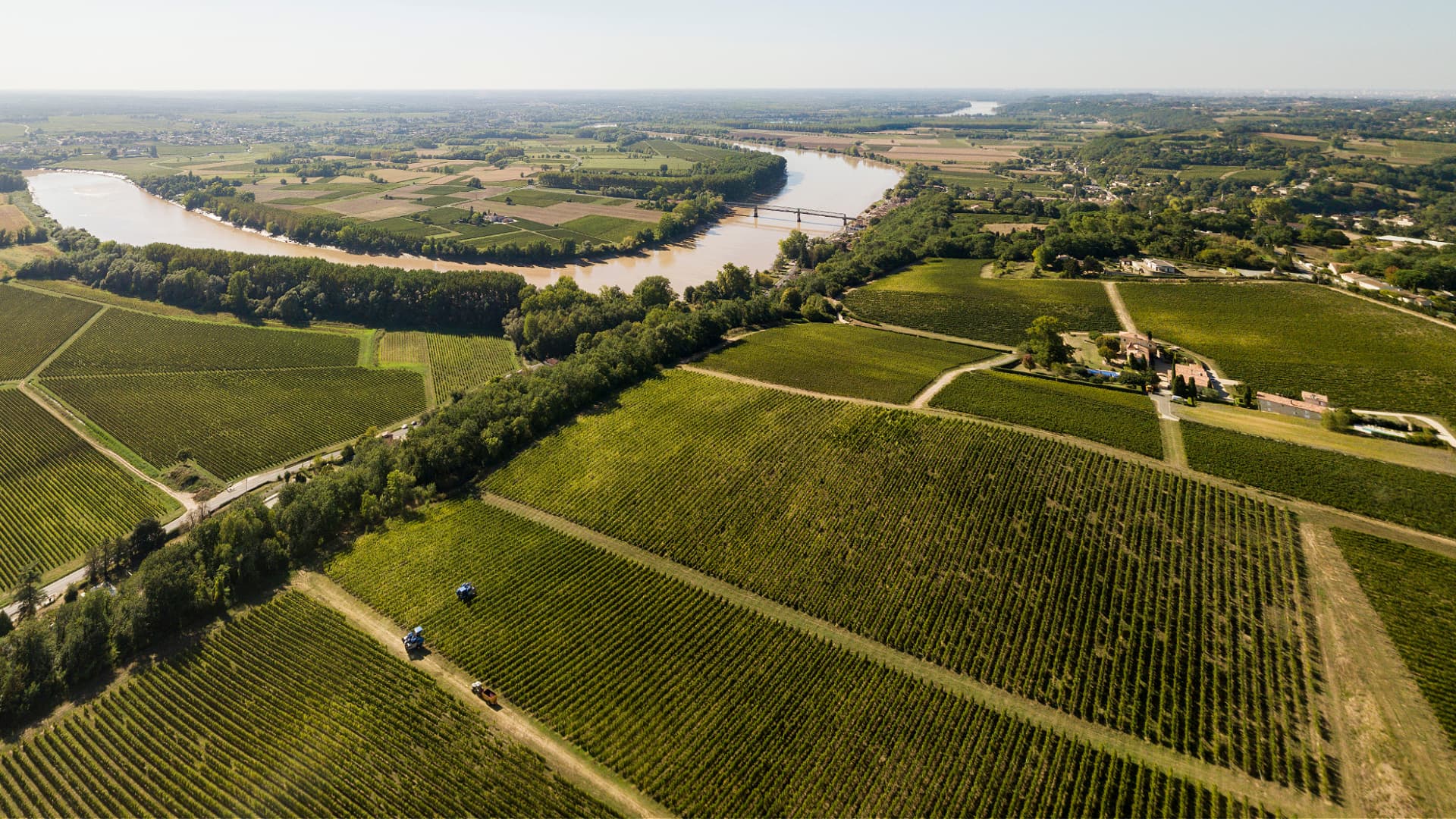
Bernard Saïn produced the first olive oil from his grove in Gironde for commercial sale after planting olive trees in 2018 upon retirement. Saïn overcame challenges due to the region’s climate and terrain, and his success has inspired other farmers in the area to consider diversifying into olive cultivation.
In the southwestern French department of Gironde, Bernard Saïn has produced the first olive oil from his grove to be sold commercially.
In 2018, when we planted the first 200 trees, people thought we were crazy. Everyone was likely expecting us to crash and burn.
Despite his family’s ownership of olive trees and having been millers since 1903, Saïn did not plant his first olive trees until 2018, when he retired.
“I was an arboriculturist in southern France until 2000,” he told Olive Oil Times. “A series of floods — I was living on an island in the Rhône — forced me to leave and move to the southwest.”
See Also:Olive Oil Production Comes to French Capital“When I was approaching retirement in 2017, my wife suggested planting olive trees to occupy my time,” Saïn added. “That’s how this adventure began.”
Along with his wife, Françoise, he planted the olive grove in Aillas, about 50 kilometers southeast of Bordeaux.
Over the next three years, they planted over 600 Picholine, Aglandau, Cayon and Bouteillan olive trees.
Saïn also built Gironde’s first olive oil mill, creating a hub for local production. After the recent harvest, the couple sold olive oil commercially for the first time.
Gironde is known for its temperate climate, where temperatures seldom fall below freezing, and summers are relatively mild, rarely exceeding 30 ºC.
The region typically records an annual rainfall of 355 millimeters, but the precipitation has increased dramatically in recent years.
“We had heavy rainfall — 1,100 millimeters over two consecutive years — which has led to issues like fungal diseases,” Saïn said. “Additionally, the terrain is difficult to manage due to clay in the subsoil.”
To overcome these obstacles, Saïn took steps to adapt the land. “I had to shape the land by creating raised earth mounds to protect the roots of the olive trees from excess water and prevent root asphyxiation,” he said.
“After losing 120 trees two years after planting them on soil I was unfamiliar with — being new to the region — I had to rethink my approach,” Saïn added. “Interestingly, later on, locals told me that they also used raised mounds for sowing cereals, which reinforced the viability of this method.”
Saïn recounted the skepticism he faced in the early days of his project.
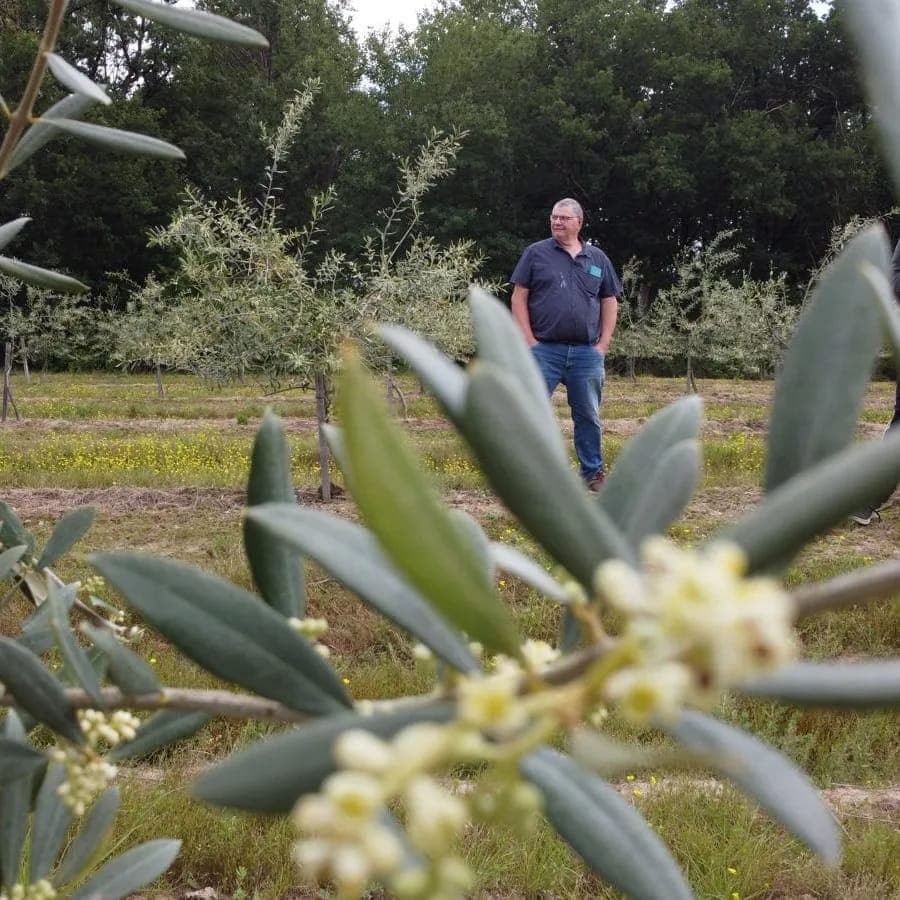
Saïn is conducting an informal experiemnt to see which olvie varieties, aside from native French olives, will adapt to Gironde’s distinct climate. (Photo — Bernard Saïn)
“In 2018, when we planted the first 200 trees, people thought we were crazy — city folk trying to do something that had never existed here,” he said. “Everyone was likely expecting us to crash and burn.
“But now, two or three years later, we’ve become pioneers, and the way people see us has completely changed,” Saïn added. “The challenges in the wine industry have even prompted local winegrowers to wonder if they can diversify into olive cultivation.”
Looking toward the future, Saïn said he plans to plant another 300 trees of a range of varieties to see how they fare compared to traditional French olives.
“Since we have our mill, we’re fully autonomous, and our production will continue to increase every year,” he said. “We’ve already started direct sales through short distribution channels, and next year, we plan to develop e‑commerce to reach even more customers.”
Along with milling olives from his grove, Saïn also allows local residents to bring their fruit for pressing. He said the initiative fosters the principle of “produce local, consume local” while preserving traditional agricultural practices.
Fellow new olive growers may soon join Saïn. While the region is traditionally known for its vineyards and fine wines, producer association France Olive has identified Gironde as an interesting place for new olive groves.
Already, wine producers struggling after several years of poor harvests have identified growing olive trees as a way to diversify their operations.
“There’s a wine crisis in the Bordeaux region among small wine producers who are faced with an uncertain cash flow and unsold wine stocks,” Hélène Lasserre, France Olive’s director of conservation and research, told Olive Oil Times in a 2023 interview.
However, given the uncertainty of potential profitability, convincing winegrowers to commit years of effort and significant financial resources to cultivating olive trees and establishing a mill remains challenging.
Even so, Saïn’s decision to grow olive trees in a less traditional region is part of a broader trend in France.
Yannick Masmondet, architect of the Oil’ive Green project, plans to plant 50,000 hectares of olive trees in the South of France by 2030.
The former winemaker from Bordeaux believes that planting olive trees will diversify farmers’ incomes as climate change impacts the viability of grapes and other crops.
Additionally, he and Lasserre identified olive oil as a strategic product, given the immense difference in production and consumption. France produces about four percent of the olive oil consumed in the country, which has not changed much in the last 20 years.



